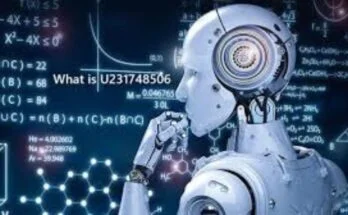Introduction:
As Artificial Intelligence (AI) continues to weave its way into the fabric of education, concerns about its negative impacts have grown. This article dissects 15 potential negative effects of Artificial Intelligence in education, shedding light on the challenges that educators, students, and policymakers may face. Additionally, we’ll address some frequently asked questions to provide a comprehensive understanding of the potential pitfalls associated with the integration of AI in the educational landscape.
15 Potential Negative Effects of Artificial Intelligence in Education:
1. Dehumanization of Learning:
The integration of AI in education raises concerns about the potential dehumanization of the learning experience. As educational institutions increasingly rely on AI, there is a growing apprehension that the vital personal connection between educators and students may be at risk. This overreliance on technology could lead to a gradual erosion of the profound impact that human empathy and emotional intelligence play in fostering a supportive and enriching learning environment.
The intricacies of human connection, nuanced understanding, and the ability to tailor education to individual needs may be compromised as AI takes a more prominent role in the educational landscape. Striking a delicate balance between technological innovation and preserving the human touch in education becomes imperative to ensure a holistic and personalized learning journey for students.
2. Overemphasis on Standardized Testing:
The growing reliance on AI-driven assessments in education has sparked concerns about an overemphasis on standardized testing. This technological shift may inadvertently place undue emphasis on standardized metrics, possibly oversimplifying the complex tapestry of a student’s abilities. The risk lies in neglecting the diverse array of skills, talents, and creativity that students bring to the learning environment. As the educational landscape becomes increasingly driven by AI algorithms, it becomes essential to strike a balance that recognizes and values the multifaceted nature of student capabilities, ensuring a more holistic approach to assessing educational achievements.
3. Reinforcement of Biases and Inequality:
The potential reinforcement of biases and exacerbation of inequalities arises when AI algorithms are trained on biased datasets. Inadvertently perpetuating existing biases, these algorithms may contribute to disparities in education. The critical concern lies in the need for rigorous scrutiny and cleansing of datasets to ensure fairness and equity in the outcomes generated by AI in educational settings. Addressing this challenge is paramount to fostering an inclusive and unbiased learning environment, where technology supports, rather than hinders, efforts to bridge educational gaps.
4. Job Displacement and Changing Educational Landscape:
The progression of AI technology poses the potential threat of job displacement within the education sector, fundamentally reshaping traditional teaching roles and precipitating significant job losses. As automation becomes more prevalent, concerns loom over the possible diminishing demand for human educators. The evolving educational landscape necessitates a careful navigation of the balance between the benefits of AI integration and the preservation of employment opportunities for teaching professionals. Striking this balance is crucial to ensuring a harmonious coexistence between technological advancements and the human element in education.
5. Lack of Emotional Intelligence:

The deficiency in emotional intelligence within AI systems is a notable concern, as these technologies frequently struggle to grasp and appropriately respond to the nuanced emotions of students. This limitation poses a potential obstacle to the development of crucial socio-emotional skills. The intricate landscape of human emotions demands a more nuanced understanding, and the current limitations of AI in this aspect raise questions about its effectiveness in addressing the holistic needs of students. Balancing technological advancements with the cultivation of emotional intelligence becomes pivotal to fostering a well-rounded and supportive educational experience.
6. Privacy and Data Security Concerns:
The extensive collection and analysis of student data in the realm of education give rise to significant apprehensions regarding privacy and data security. This underscores the imperative need for striking a delicate equilibrium between maximizing the utility of collected data and safeguarding the privacy rights of students. As educational institutions embrace data-driven approaches, robust measures must be implemented to ensure the responsible handling and protection of sensitive information, thereby fostering a secure and trustworthy educational environment.
7. Dependency on Technology:

An excessive reliance on AI has the potential to foster a significant dependency on technology within educational institutions. This overdependence renders these institutions susceptible to disruptions when confronted with technical glitches or malfunctions. Striking a balance between leveraging the benefits of AI and maintaining a resilient educational infrastructure becomes paramount to ensure uninterrupted learning experiences. Educators and policymakers must navigate the integration of technology with prudence, recognizing the need for contingency plans to mitigate the impact of technological hiccups on the educational process.
8. Loss of Creativity and Critical Thinking:

The potential loss of creativity and critical thinking emerges as a concern within AI-driven curricula, where there is a risk of prioritizing rote learning. This emphasis on memorization may impede students’ capacity to think independently and critically. Striking a balance between leveraging AI for educational efficiency and preserving space for creative exploration and critical thought becomes essential. Fostering an environment that encourages diverse learning approaches and values independent thinking is crucial to preparing students for the challenges of a dynamic and innovative future.
9. Standardization of Education:
The prospect of AI’s contribution to a standardized educational experience raises concerns about overlooking the significance of tailoring learning approaches to individual student needs and learning styles. The risk lies in the potential homogenization of education, neglecting the diverse ways in which students absorb and process information. Striking a delicate balance between leveraging AI for efficiency and preserving the adaptability of educational methods becomes imperative. Ensuring a personalized and inclusive learning environment that caters to the unique strengths and preferences of each student is vital for fostering a well-rounded and effective educational experience.
10. Limited Understanding of Context:

The limitation in comprehending the context of distinct educational environments poses a challenge for AI systems, potentially resulting in inaccuracies in assessments and recommendations. The intricate nuances of individual learning settings may elude the capabilities of AI, impacting the precision of its analyses. Navigating this hurdle requires a nuanced approach to AI integration, emphasizing adaptability and continuous refinement to ensure a more accurate understanding of the diverse contexts in which education unfolds. Striking this balance is crucial to harnessing the benefits of AI without sacrificing the precision required to make informed educational decisions.
11. Social Isolation:
The potential for social isolation among students is a concern linked to the digital nature of AI-based learning, which may deprive them of valuable face-to-face interactions with peers and educators. As technology assumes a more prominent role in education, the risk of diminished social engagement raises questions about the overall well-being of students. Striking a balance between leveraging AI for educational enhancements and preserving opportunities for interpersonal connections becomes crucial. Educators and policymakers must navigate this evolving landscape with care, recognizing the importance of a holistic learning environment that fosters both technological advancement and meaningful social interactions.
12. Loss of Human Touch in Feedback:
The potential loss of the human touch in feedback is a notable concern when it comes to automated grading systems. These systems may lack the nuanced feedback that human educators provide, possibly impeding students’ understanding and hindering their overall growth. Striking a balance between the efficiency of automated grading and the personalized insights offered by human educators is crucial to ensure a comprehensive and effective feedback system. This delicate integration is essential for fostering a supportive educational environment that combines the benefits of technology with the unique qualities of human interaction in the learning process.
13. Inability to Adapt to Non-Traditional Learning Styles:
The challenge of adapting to non-traditional learning styles is evident in the limitations of AI, which may encounter difficulties accommodating experimental teaching methods. This struggle poses a potential restriction on the diversity of educational approaches, hindering the exploration of innovative and non-conventional teaching techniques. The rigid nature of some AI systems may not easily align with the dynamic and evolving landscape of non-traditional learning. Educators navigating these uncharted territories must be mindful of finding a harmonious balance that allows for the integration of technological advancements while preserving the flexibility necessary to cater to diverse and evolving learning styles.
14. Erosion of Student Autonomy:
The erosion of student autonomy is a potential consequence of leaning heavily on AI for decision-making in education. Overreliance on automated systems may restrict students’ freedom in selecting their learning paths and exploring their individual interests. Striking a balance between AI assistance and empowering students to make informed choices becomes pivotal. Ensuring that technology supports rather than dictates educational trajectories is essential for fostering a sense of independence and self-directed learning. Educators and policymakers must navigate this intersection thoughtfully, recognizing the importance of preserving students’ autonomy while leveraging the benefits of AI in enhancing educational experiences.
15. Economic Barriers to Access:
The potential economic barriers to access in education arise from the substantial costs linked to the implementation of AI. These high financial requirements may exacerbate existing educational inequalities, restricting access for underserved communities. Balancing the integration of AI with affordability becomes imperative to ensure equitable access to technological advancements in education. Policymakers and institutions must work collaboratively to address these economic challenges, focusing on initiatives that bridge the financial gap and promote inclusivity. Finding sustainable solutions is crucial to harnessing the transformative power of AI in education without widening the disparity between privileged and underserved communities.
Frequently Asked Questions:
Q1: Can AI completely replace human educators?
Ans: While AI can assist in various aspects of education, complete replacement of human educators is unlikely due to the irreplaceable human touch, emotional intelligence, and adaptability they bring to the learning environment.
Q2: How can AI contribute to personalized learning without reinforcing biases?
Careful selection and scrutiny of training datasets, coupled with ongoing monitoring and adjustment of AI algorithms, can help mitigate biases and ensure a more equitable and personalized learning experience.
Q3: What measures can be taken to address privacy concerns associated with AI in education?
Ans: Robust data protection policies, encryption measures, and transparent communication with stakeholders can help safeguard student privacy in AI-driven educational systems.
Q4: How can educators balance the use of AI with traditional teaching methods?
Ans: Striking a balance between leveraging AI for efficiency and preserving traditional teaching methods requires thoughtful integration, continuous professional development, and a focus on maintaining the human connection in education.
Q5: What steps can be taken to ensure that AI benefits all students, regardless of socioeconomic background?
Ans: Policymakers and educators must work collaboratively to address economic barriers, promote inclusive access to technology, and design AI applications that cater to the diverse needs of students across different socioeconomic backgrounds.
Conclusion:
While the integration of artificial intelligence in education holds the promise of revolutionizing learning experiences, it is essential to acknowledge and address the potential negative effects. Balancing technological innovation with the preservation of human-centric educational values is the key to navigating the future of education successfully. As educators, students, and policymakers continue to harness the power of AI, a thoughtful and humanized approach is crucial to mitigate the risks and ensure a positive and equitable future for education.
See Also:





The article posted was very informative and useful. You people are doing a great job. Keep going.
Thanks for reading my article. Your appreciation means greatly to me.
Impressive!
you’re truly a good webmaster. The website loading pace is amazing. It seems that you are doing any distinctive trick. Furthermore, The contents are masterpiece. you’ve performed a excellent task on this matter!
Can you be more specific about the content of your article? After reading it, I still have some doubts. Hope you can help me.
I really enjoy examining on this website, it has got wonderful posts. “And all the winds go sighing, For sweet things dying.” by Christina Georgina Rossetti.